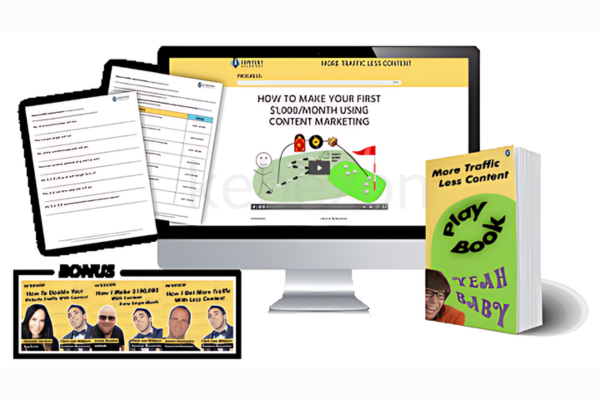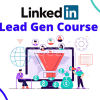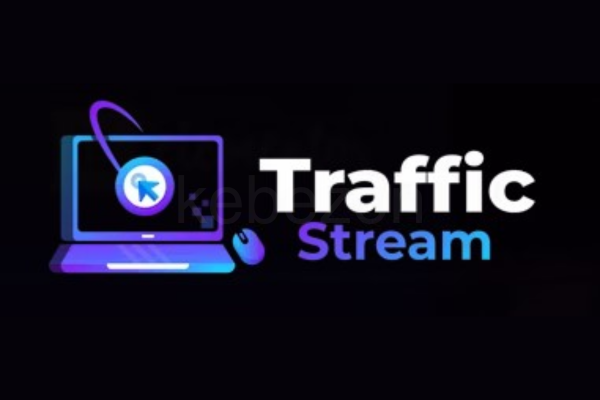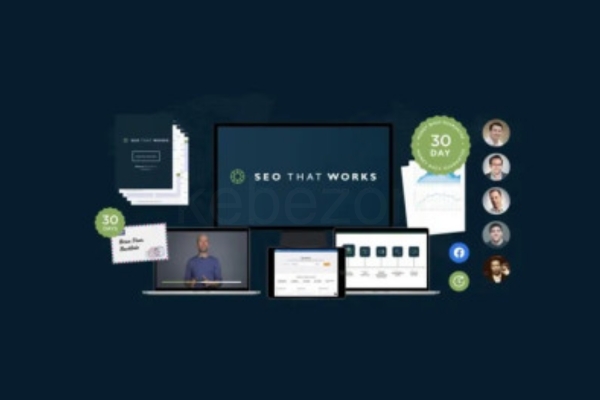More Traffic Less Content (PlayBook) with Content Mavericks
500,00 $ Original price was: 500,00 $.5,00 $Current price is: 5,00 $.
You may check content proof of “More Traffic Less Content (PlayBook) with Content Mavericks” below:

More traffic less content playbook by content mavericks
In today’s ever-evolving digital landscape, the formula for achieving marketing success has shifted dramatically. Instead of presuming that more content will yield greater traffic a common misconception Content Mavericks introduces a revolutionary mindset encapsulated in their playbook titled More Traffic, Less Content. This strategy emphasizes quality over quantity, honing in on high-impact topics that resonate profoundly with target audiences. By meticulously analyzing what works and adopting a more strategic approach, marketers can appreciate significant traffic gains with minimal yet valuable content output.
Imagine a chef who can create a gourmet meal that tantalizes the taste buds without requiring a lengthy recipe or an exhaustive list of ingredients. Similarly, the More Traffic Less Content playbook equips content creators and marketers with the tools to deliver substantial results without the burden of constant content generation. Through actionable insights and effective techniques elaborated in this guide, marketers are empowered to focus their efforts on impactful content that not only attracts traffic but also fosters engagement and conversion.
In a world where attention spans are dwindling, successful content marketing becomes an art of precision; akin to a poet crafting each verse to resonate with emotion and clarity. The ensuing sections will delve into the strategies and methodologies that frequent readers and content creators can employ to redefine their content marketing efforts while simultaneously expanding their reach.
Strategies for generating traffic with minimal content
Embracing the idea of less is more, generating traffic through minimal content requires a refined approach that prioritizes strategic planning and audience understanding. It’s akin to sculpting a marble block: rather than chiseling away indiscriminately, a skilled artist knows where to strike decisively to reveal breathtaking forms. Let’s unpack some pivotal strategies that aid in this transformation of a cluttered content landscape into a more manageable and effective environment.
- Identify High-Impact Topics: Research and pinpoint the most pressing questions and concerns of your target audience. Instead of producing a barrage of generic articles, targeting core issues can elevate the engagement of fewer, well-crafted pieces.
- Quality Over Quantity: Create in-depth content that addresses specific issues comprehensively. High-quality resources not only cater to user needs but also encourage backlinks and social shares, consequently increasing visibility.
- Optimize for SEO: Even with minimal content, optimizing high-value pieces for search engines will improve discoverability. Utilize techniques like keyword research, metadata optimization, and backlinks from authoritative sites.
- Distribute Your Content Strategically: Employ efficient distribution methods through emails, social media, and collaborations to boost the visibility of your content.
- Measure and Iterate: Use web analytics and user feedback to identify which pieces resonate the most and refine your strategy accordingly.
By employing these strategies, marketers can streamline their content output to achieve higher traffic levels while ensuring each piece delivers maximum value.
Focusing on high-impact topics
In the realm of digital content, “focus” often proves to be a game-changer. Imagine a seasoned hunter who understands that chasing after every sound is futile rather, success comes from pinpointing and narrowing one’s aim on a singular target. More Traffic Less Content emphasizes similar concepts by encouraging marketers to delve deeply into high-impact topics that resonate with audiences on a profound level.
Identifying these high-impact topics entails thorough audience research. Begin by identifying the common pain points, questions, or interests that your target audience grapples with daily. Using tools like Google Trends, forums such as Quora, or social media listening tools can unveil what’s currently trending and where your audience is actively engaging.
Informed by these insights, create robust content that comprehensively addresses the identified challenges. Instead of producing a series of short articles, consider crafting a comprehensive guide or a long-form blog post that intricately tackles the core issue. This approach not only provides substantial value but also positions your brand as an authority in the industry. For instance, if your audience seeks effective strategies for email marketing, producing a detailed resource that outlines strategies, tools, templates, and case studies can deeply engage readers, encouraging them to return for future insights.
To further emphasize the value of focusing on high-impact topics, it’s important to highlight their dividends beyond mere traffic generation they foster trust and lead to deeper audience engagement. When individuals find solutions to their pressing problems in high-quality content, they are likely to share those findings, driving organic traffic through word-of-mouth recommendations, a vital component of sustainable growth in the digital space.
Utilizing a content distribution system
The effectiveness of high-quality content is amplified when combined with a well-strategized content distribution system. Think of a phenomenal movie that goes unnoticed simply because it didn’t hit the right screens at the right time; similarly, even the best content can languish without proper distribution. A robust content distribution strategy not only amplifies visibility but also optimizes the reach of your limited content array.
- Diversify Distribution Channels: Spread your content across various platforms social media, email newsletters, and industry-specific forums to maximize your audience engagement. This diversified approach ensures that your content is seen across multiple touchpoints.
- Balance Paid and Organic Strategies: Allocate resources towards both paid advertising and organic SEO. While organic traffic can grow over time, paid traffic provides immediate visibility. Experiment with targeted ads directing users to your high-impact content and track performance closely.
- Repurpose Content: Transform existing content into different formats such as turning a blog post into a podcast or an infographic. This method allows you to reach different audience segments while amplifying the original message.
- Leverage Influencer Partnerships: Collaborate with influencers or industry leaders who can help disseminate your content. Their endorsement can significantly amplify your message and enhance credibility.
- Utilize Email Marketing: Employ your email list strategically by sending out curated content or even snippets leading readers back to the full pieces. This direct engagement can drive significant traffic to your offerings.
Through such a comprehensive distribution model, marketers are positioned to enhance their effectiveness, reaching wider audiences with their carefully crafted high-impact content while keeping the workload minimal.
Leveraging SEO strategies for better rankings
SEO, or search engine optimization, is the backbone of any content marketing strategy aimed at increasing visibility and traffic. In a world cluttered with digital noise, think of search engines as a library with an infinite number of books. If your book your content isn’t categorized effectively, it risks being lost on the shelves. By utilizing effective SEO strategies, you can ensure that your content is easily identifiable and accessible to those searching for relevant information.
- Keyword Research: Start by conducting thorough keyword research to identify terms and phrases your target audience frequently searches for. Tools like Google Keyword Planner and SEMrush can be invaluable for this purpose. Target a combination of high-volume and low-competition keywords to optimize your content.
- On-Page Optimization: Optimize each piece of content with relevant keywords, including in titles, headers, and throughout the text. Additionally, metadata such as meta titles and descriptions should reflect the content, enticing users to click through when it appears in search results.
- Internal and External Linking: Use a mix of internal links to guide readers to other relevant content on your site, enhancing user experience. Furthermore, building backlinks from reputable sites elevates your own site’s credibility in the eyes of search engines.
- Focus on Content Quality: Search engines favor high-quality, engaging content that provides meaningful value to users. Invest time in researching and ensuring your pieces are well-structured and informative.
- Content Length and Depth: Analyze competitor content to understand what’s working for your niche. Interestingly, while longer content can rank better, the key lies in providing true value rather than merely filling space.
Implementing these SEO strategies ensures your high-impact content stands a greater chance of being discovered in search results. As a result, organic traffic increases, amplifying the advantages of a less-is-more approach in content creation.
Creating compelling headlines that drive clicks
A captivating headline serves as the gateway to your content, much like a cherry atop a sumptuous dessert. A title can make the difference between attracting a reader’s attention or losing them in a sea of digital options. In the realm of content marketing, crafting compelling headlines can significantly impact click-through rates and overall engagement.
- Utilize Numbers: Headlines featuring numbers tend to attract attention, such as “7 Tips for Boosting Your Productivity.” Numbers imply a structured approach, alluring readers with the promise of quick and digestible insights.
- Incorporate Power Words: Use strong, evocative adjectives to enhance urgency and emotional appeal. Phrases like “ultimate,” “essential,” or “transformative” stir curiosity and compel readers to click.
- Create Urgency: Instilling a sense of urgency can significantly increase click rates. Phrases such as “limited time offer” or “don’t miss out” induce readers to act quickly, fearing they might lose an opportunity.
- Pose Questions: Framing your headline as a question taps into the audience’s curiosity. Engaging queries like “Are You Making These Costly Mistakes?” invite intrigue and encourage exploration.
- Be Specific: Specificity in a headline clarifies what the reader should expect. A title like “10 Proven Techniques for Growing Your Business” is far more compelling than a vague “Improve Your Business.”
- Promise Solutions: Headlines that indicate a direct solution to a problem can draw in readers seeking help. For example, “How to Overcome Procrastination in 5 Easy Steps” addresses a common challenge while offering practical advice.
By implementing these techniques, marketers can create headlines that fundamentally enhance click-through rates, driving more significant engagement with their minimal content investment.
Effective content marketing techniques
Effective content marketing encompasses a myriad of techniques that work in synergy to elevate brand presence and engage users. Emphasizing quality content while understanding how to communicate that value to your audience is fundamental for success. Here are several effective marketing techniques you can implement without overextending your content creation efforts:
- Create Evergreen Content: Content that remains relevant over time continues attracting traffic long after its initial publication. Focus on universal topics that provide value regardless of timing.
- Utilize Social Proof: Leverage reviews, testimonials, and case studies to bolster credibility. When potential customers see that others have had positive experiences, they are more likely to trust your brand.
- Streamline Your Content Calendar: Developing a structured content calendar helps maintain consistency while allowing strategic planning. Ensure to highlight key topics that align with audience interests and adjust based on feedback and analytics.
- Optimize with Analytics: Consistently monitor performance metrics to analyze what resonates with your audience. Use this data to fine-tune your approach and focus on creating content that incites engagement and shares.
- Engage on Social Media Platforms: Use social media not just to share content, but to engage with your audience directly. Answer questions, participate in conversations, and share valuable resources to initiate relationships and encourage loyalty.
By embracing these content marketing techniques, brands can present compelling narratives and evidence-driven insights that capture audience attention, fostering stronger connections and driving more traffic with minimal output.
Building trust through free value
In the digital world, trust is the bedrock on which lasting relationships are built. In a marketplace inundated with options, brands that prioritize trust stand out. A key strategy through which companies can establish themselves as reliable partners is by offering free value through content.
- Provide Generous Resources: Offering free resources such as e-books, guides, webinars, or templates position your brand as a valuable authority. This approach invites potential customers to experience your expertise firsthand.
- Engage with Transparency: Being open about your practices fosters authenticity. Addressing potential concerns honestly, such as pricing structures or common product questions, encourages trust and fosters a strong rapport.
- Utilize Consistent Communication: Build trust through regular, informative communication. Offer newsletters filled with insightful content, keeping your audience engaged and reinforcing your brand’s organization and reliability.
- Implement Customer Feedback Channels: Encourage feedback and actively listen to customer opinions. This demonstrates your commitment to improving based on user insights and enhances trust in your brand’s willingness to adapt.
- Showcase User Testimonials: Share authentic testimonials that highlight real customer experiences. Personal stories resonate emotionally, allowing potential customers to connect with your brand through relatable experiences.
By structuring content marketing around the principles of trust and providing free value, brands can foster a sense of community, leading to long-term loyalty and increased traffic over time.
Implementing the pain and trust approach
In an era where consumers face endless options, adopting the pain and trust approach is pivotal in honing in on your target audience’s needs. This strategy involves acknowledging the challenges faced by your prospects and building rapport based on shared understanding and genuine support.
- Identify Audience Pain Points: Start by conducting surveys, interviews, or research to pinpoint the specific obstacles your target audience encounters. Understanding these pain points is essential for addressing their needs effectively.
- Show Empathy in Messaging: Exhibiting empathy in your communications fosters a deeper connection with your audience. When potential customers feel understood, they are more inclined to trust your brand and engage with your content.
- Offer Authentic Solutions: Ensure your content addresses audience pain points with valuable solutions. Offering actionable insights and strategies that tackle these issues establishes your brand as an authority capable of driving real change.
- Build Trust Through Engagement: Encourage open dialogue via social media platforms or community forums. Responding to questions and facilitating discussions fosters trust, allowing you to better understand your audience while showcasing your brand’s willingness to connect.
- Leverage Authentic Case Studies: Display case studies that illustrate how others overcame similar obstacles through your products or services. Real-life accounts of success instill confidence in your offering and demonstrate its relevance.
By employing the pain and trust approach, marketers can connect with their audience on a personal level, leading to a significant increase in traffic through genuine engagement and relationships built on empathy.
Utilizing email marketing for lead conversion
Email marketing remains a cornerstone of lead conversion, boasting an impressive return on investment when executed with finesse and strategy. The More Traffic Less Content playbook highlights actionable insights on leveraging email effectively to not only generate leads but also build lasting relationships with your audience.
- Craft Engaging Subject Lines: Subject lines serve as the invitation to your email. Ensure they are enticing and relevant, compelling readers to open and engage with your content.
- Segment Your Audience: Tailor your emails to specific segments of your audience based on their preferences, behaviors, or past interactions. Personalization increases engagement rates and drives conversions.
- Establish a Clear Value Proposition: Clearly communicate the value your content brings to the reader. Emails should succinctly detail how your offerings can solve their problems or elevate their experience.
- Employ Strong Calls-to-Action (CTAs): Every email should include a powerful CTA guiding the reader towards the next step, whether visiting your site, signing up for a webinar, or making a purchase.
- Analyze and Optimize Performance: Utilize analytics to track email open rates, click-through rates, and overall engagement. This metric data will inform future email strategies and highlight areas for optimization.
By cultivating a robust email marketing strategy and implementing these tactics, marketers can successfully convert leads while reinforcing brand relationships and delivering consistent value.
Tools and resources provided in the playbook
The More Traffic Less Content playbook by Content Mavericks offers an array of valuable tools and resources designed to streamline content marketing efforts while maximizing results. Focusing on efficiency rather than volume, these resources empower marketers to optimize their approach and make informed decisions.
- Keyword Research Tools: Resources such as Keywords Everywhere and Google Keyword Planner help identify popular search terms relevant to your audience.
- Content Management Systems (CMS): Platforms like WordPress serve as powerful tools for managing content creation and distribution effectively while providing user-friendly interfaces.
- Analytics Software: Tools such as Google Analytics, Hotjar, and SimilarWeb are essential for tracking website performance and understanding user behavior, thus enabling data-driven decision-making.
- Templates for Content Creation: The playbook includes worksheets and templates, aiding marketers in strategizing and structuring their content effectively to meet objectives.
- Email Marketing Platforms: Recommendations for platforms that can streamline email marketing efforts, such as Mailchimp or ConvertKit, enhancing lead nurturing capabilities.
By utilizing these tools and resources, marketers can enhance their workflow efficiency, create more impactful content, and ultimately drive traffic with less effort.
Detailed worksheets and templates for content creation
To streamline the content creation process and optimize for better results, specific worksheets and templates are invaluable. These resources guide marketers in crafting compelling content while establishing clarity in their strategy. Below are essential resources typically found in a well-structured playbook like More Traffic Less Content:
- Content Planning Templates: These provide frameworks for brainstorming and organizing content ideas, including topic relevance and audience targeting.
- SEO Checklists: Step-by-step guides ensure that each piece of content adheres to best SEO practices, increasing visibility and attracting organic traffic.
- Content Format Guides: Templates for varying content formats blogs, infographics, videos allow creators to structure their work efficiently to maximize engagement.
- Editorial Calendar Layouts: Templates for scheduling content releases ensure consistency and allow marketers to plan for seasonal trends or relevant news topics.
- Evaluation Sheets: After content publication, evaluation sheets can track performance metrics, analyze engagement, and provide insight into what works best.
By incorporating these organized templates into daily operations, marketers can streamline their processes, ensuring consistent quality without the overwhelm of excessive content creation.
Conversion optimization tools
Effective conversion optimization tools are essential in maximizing the success of any content marketing strategy. By focusing on enhancing user experience and engaging visitors, brands can capitalize on their traffic. The More Traffic Less Content playbook features various tools to assist marketers in this endeavor.
- A/B Testing Software: Platforms like Optimizely and VWO facilitate A/B testing to identify which design or content variations yield better conversion rates.
- Landing Page Builders: Tools such as Instapage or Unbounce enable marketers to design high-converting landing pages that capture leads effectively.
- Heatmapping Technologies: Tools like Crazy Egg and Hotjar provide insights into user behavior on your site, allowing marketers to see where visitors click and how they navigate through content.
- Analytics Platforms: Google Analytics and Kissmetrics offer detailed reports on website traffic and user interaction, helping marketers identify areas for improvement.
- Email Automation Tools: Solutions like Mailchimp or ActiveCampaign streamline email marketing campaigns and ensure timely follow-ups, enhancing conversion potential.
Employing these conversion optimization tools helps brands enhance user experience, guiding visitors smoothly through the marketing funnel and maximizing lead conversion potential effectively.
Action steps for traffic building
Incorporating action steps into a traffic-building strategy is essential for executing the insights garnered from the More Traffic Less Content playbook. These steps outline a practical framework aligning with the strategies previously discussed, illustrating how to enact change in an organized manner:
- Content Brainstorming: Engage in team brainstorming sessions to identify targeted blog topics based on high-impact audience needs and trending issues.
- SEO Research: Conduct thorough SEO analysis to discover targeting opportunities and optimize upcoming content based on keyword competition and search volume.
- Content Calendar Development: Maintain a content calendar that organizes publication timelines, themes, and promotion strategies to ensure consistent messaging.
- Blog Post Templates: Utilize fill-in-the-blank templates for crafting titles and introductions that capture attention, making drafting easier and quicker.
- Traffic Campaign Launch: Strategize and launch campaigns promoting viral content using a combination of organic outreach and paid advertising to maximize exposure.
- Engagement Measurement: Implement tracking using analytics tools to monitor performance and adjust strategies based on insights gleaned from audience engagement trends.
By implementing these action steps, content marketers can streamline their efforts and foster a measurable increase in web traffic with a focused approach that emphasizes quality and targeted outreach.
Case studies and success stories
Real-world examples serve as compelling testimonies to the methodology proposed in the More Traffic Less Content playbook. These case studies demonstrate how various brands have successfully implemented the principles from the playbook, achieving significant traffic increases and improved ROI.
- AppSumo: By leveraging a targeted content strategy and premium resources, AppSumo expanded its user base while generating envious revenue per employee in the tech industry. Their approach showcases the effectiveness of impactful content over sheer volume.
- Dove’s Real Beauty Campaign: Dove amplified its brand visibility by initiating genuine dialogue around perceptions of beauty, resulting in a massive increase in traffic. This campaign illustrates the power of engagement through authentic storytelling.
- Slack’s Sponsorships: Slack’s targeted sponsorship of niche podcasts led to 100 million monthly visitors, highlighting the effectiveness of focused content distribution and strategic partnerships.
- Dropbox’s Referral System: Implementing a straightforward referral program significantly increased Dropbox’s user base at minimal cost, demonstrating how user-driven engagement can lead to exponential growth.
- Intercom’s SEO Strategy: Intercom smartly targeted customer pain points rather than merely emphasizing keywords, leading to substantial organic traffic without excessive content production.
These case studies exemplify the real-world applications of content strategies, reinforcing how marketers can fine-tune their approaches for optimally achieving success through fewer, well-planned content efforts.
Notable brands that have benefited from the system
Some notable brands have effectively harnessed the More Traffic Less Content philosophy, achieving remarkable success and delivering value to their audiences without inundating them with content. These exemplary brands provide proof of the viability of focusing on high-impact content over sheer volume.
- AppSumo: Achieved impressive growth in user subscriptions and revenue through minimal but targeted content efforts, focusing on quality rather than quantity including engaging blog posts and compelling calls-to-action.
- Salesforce: Salesforce effectively creates fewer high-value pieces that demonstrate its software’s usability and value proposition, allowing it to engage users and generate substantial leads efficiently.
- Buffer: Buffer adopted a focused content strategy centered on social media branding and optimization. By analyzing audience needs, it produces valuable yet limited content that consistently drives high engagement rates.
- BuzzFeed: Known for its viral headlines and entertaining quizzes, BuzzFeed has mastered the art of creating shareable content, leveraging the More Traffic Less Content approach to drive traffic effectively.
- Shopify: By tackling specific issues faced by e-commerce entrepreneurs with actionable insights, Shopify fabricates resonant narratives that connect deeply with its audience, fostering loyalty and trust.
These brands exemplify how concentrating on high-impact topics and quality content can yield tremendous results, demonstrating efficacy without excessive content production.
Analysis of traffic increases achieved
The principles laid out in the More Traffic Less Content playbook have led numerous businesses to experience significant traffic increases while maintaining minimal content output. Case studies of these successes provide clear evidence of achievable outcomes when implementing these strategic methodologies.
- Tony Robbins: By leveraging a single lead generation quiz, Robbins generates over a million visitors monthly. This outcome underscores the power of a focused content strategy over extensive output.
- Shopify: Shopify’s strategic targeting of e-commerce questions resulted in a remarkable 90% revenue increase, exemplifying how targeting valuable content to specific needs can create substantial traffic and conversion growth.
- Mailchimp: Utilizing curated email newsletters filled with valuable insights, Mailchimp experienced consistent growth in user engagement and significant traffic as recipients shared effective tips within their networks.
- Intercom: Intercom’s shift toward creating content that addresses customer problems as opposed to generic keyword targeting drove significant growth in organic traffic, demonstrating the effectiveness of optimizing for user intent rather than keyword volume.
- Content Mavericks Client Successes: Many businesses within the ecosystem of Content Mavericks have reported average traffic increases of 150% within six months of adopting the playbook’s strategies, showcasing the viability of effective content management for marked results.
These data points reflect how targeted, meaningful content can lead to significant short-term and long-term success, establishing a compelling case for the More Traffic Less Content philosophy.
Direct comparison of content output vs. results
To illustrate the effectiveness of the More Traffic Less Content approach, analyzing the direct correlation between content output and results is critical. Here, we compare examples from various businesses that have embraced this strategy, showcasing the efficacy of focused content output.
Brand Content Output Traffic Results AppSumo 1-2 high-impact posts/month 1 million subscribers and significant revenue increases Tony Robbins 1 quiz (lead generation) 1 million + monthly visitors Shopify 4-5 targeted articles/month 90% revenue increase over one year Buffer 2-3 posts/month Consistent growth in engagement and traffic Dropbox Minimal promotional content Unprecedented growth in user base
These comparisons illustrate that brands producing fewer, high-quality pieces can achieve substantial traffic growth while avoiding the clutter of excessive content production. This approach emphasizes strategic targeting and effective distribution over sheer volume, making it a powerful model in the digital marketing landscape.
Measuring success and performance
To assess the effectiveness of content strategies, measuring success through performance metrics is pivotal. Employing a variety of both qualitative and quantitative indicators gives marketers comprehensive insights into their campaigns’ outcomes. Key performance indicators to consider include:
- Total Website Traffic: Measure overall user visits to gauge content impact.
- Traffic by Source: Determine which channels (organic, direct, referral) contribute most significantly, allowing for strategic channel optimization.
- Engagement Metrics: Track time spent on pages, bounce rates, and pages viewed per session to understand user interaction.
- Conversion Rates: Measure how many visitors convert into leads or customers to assess the effectiveness of your content in driving actions.
- Return Traffic Rates: Identify the proportion of new versus returning visitors to evaluate loyalty and content relevance.
- Email Engagement: Track email open and click-through rates to assess the performance of email marketing campaigns.
- Social Shares: Analyze how often content is shared across social channels as an indicator of resonance and value.
- Lead Generation Success: Measure the number of leads generated from content to assess direct impact on conversion goals.
By consistently measuring these key metrics, marketers can gain crucial feedback on content effectiveness, enabling informed decisions that drive future strategy and enhance traffic results.
Tracking and analytics frameworks
Implementing robust tracking and analytics frameworks ensures that marketers accurately measure their content’s success and audience engagement. The following frameworks are essential components of a comprehensive analytics strategy for monitoring website and content performance:
- Google Analytics: An industry-standard tool for tracking website performance metrics, this tool offers essential insights into user behavior and traffic trends.
- Google Search Console: Focused on how your website appears in search results, this tool helps track keyword rankings, impressions, and click-through rates.
- Hotjar: Provides heatmapping and recording features, allowing marketers to observe how users interact with web pages, revealing areas for optimization.
- SEMrush: A powerful SEO tool that provides insights into keyword performance, competitor analysis, and site audit capabilities, making it invaluable for content strategy.
- Matomo: An open-source analytics platform that prioritizes data security, providing robust tracking capabilities while allowing additional customization options.
- Adobe Analytics: A tool aimed at larger enterprises, offering advanced tracking solutions across multiple engagement channels with predictive capabilities.
Integrating these tools into a structured analytics framework empowers marketers with the insights needed to refine strategies and enhance performance continually, ensuring optimal traffic growth and engagement based on well-informed decisions.
Key performance indicators for traffic growth
Understanding the right key performance indicators (KPIs) for traffic growth is critical to measuring success in any content marketing strategy. Here are some essential KPIs to focus on, serving as a guidepost for marketers assessing their initiatives:
- Total Unique Visitors: Track the number of individual users visiting your site over a specified time frame.
- Session Duration: Measure the average time users spend on your website, serving as a quality indicator of engagement.
- Page Views Per Visit: Higher page views per session signify user interest and effective internal linking strategies.
- New vs. Returning Visitors: Analyze the ratio to assess how well you attract new audiences while retaining existing ones.
- Organic vs. Paid Traffic: Understand how much traffic derives from organic searches versus paid ads to inform budget allocations and strategy.
- Bounce Rate: Track the percentage of users who leave a page without further engagement an essential indication of content relevance.
- Conversion Rate: Measure the effectiveness of traffic in converting visitors into leads or sales, directly correlating to ROI.
- Social Media Engagement: Monitor shares, likes, and comments across platforms, gauging audience interest beyond your website.
By continuously monitoring these KPIs, marketers can adjust strategies, enhancing engagement while driving increased traffic to their content.
Strategies for optimizing future content efforts
To refine and enhance future content strategies in pursuit of increased traffic with minimal output, several tactics can be implemented:
- Continuously Refine Audience Personas: Regularly revisit and revise your audience profiles based on engagement data and feedback to ensure relevance in your content.
- Implement Continuous Content Audits: Frequently assess existing content, identifying top performers and areas for improvement to optimize the overall content library.
- Embrace Agile Content Production: Develop the ability to pivot quickly and create content that aligns with current trends and audience interests, ensuring timely relevance.
- Focus on Multifunctional Content: Create content designed to serve multiple purposes such as long videos turned into shorter clips or blog posts utilized for infographics maximizing resource efficiency.
- Increase Interactivity: Engage the audience with polls, surveys, and interactive guides to foster deeper connections and boost retention rates.
- Invest in Training and Education: Equip your team with the latest content marketing and SEO techniques to bring fresh perspectives into your strategies.
- Utilize User-Generated Content: Encourage your audience to share their experiences with your brand, fostering authenticity while expanding your content library.
- Expand Collaboration Opportunities: Build strategic partnerships with other brands or influencers to co-create content, reaching an expanded audience base and leveraging shared credibility.
By applying these strategies, marketers can craft optimized content efforts that yield more significant results from less production, consistently adapting to the dynamic demands of the digital landscape.
Conclusion
The More Traffic Less Content playbook by Content Mavericks fundamentally reshapes the approach to content marketing by emphasizing quality, strategic targeting, and effective distribution. Through its insights and actionable strategies, marketers can generate significant traffic while conserving resources focusing on creating high-impact content that resonates deeply with audiences. As businesses navigate the complexities of a crowded digital space, adopting this philosophy can empower brands to build authority, foster trust, and ultimately drive sustainable growth, proving with clarity that less can indeed be more.

Frequently Asked Questions:
Business Model Innovation:
Embrace the concept of a legitimate business! Our strategy revolves around organizing group buys where participants collectively share the costs. The pooled funds are used to purchase popular courses, which we then offer to individuals with limited financial resources. While the authors of these courses might have concerns, our clients appreciate the affordability and accessibility we provide.
The Legal Landscape:
The legality of our activities is a gray area. Although we don’t have explicit permission from the course authors to resell the material, there’s a technical nuance involved. The course authors did not outline specific restrictions on resale when the courses were purchased. This legal nuance presents both an opportunity for us and a benefit for those seeking affordable access.
Quality Assurance: Addressing the Core Issue
When it comes to quality, purchasing a course directly from the sale page ensures that all materials and resources are identical to those obtained through traditional channels.
However, we set ourselves apart by offering more than just personal research and resale. It’s important to understand that we are not the official providers of these courses, which means that certain premium services are not included in our offering:
- There are no scheduled coaching calls or sessions with the author.
- Access to the author’s private Facebook group or web portal is not available.
- Membership in the author’s private forum is not included.
- There is no direct email support from the author or their team.
We operate independently with the aim of making courses more affordable by excluding the additional services offered through official channels. We greatly appreciate your understanding of our unique approach.
Be the first to review “More Traffic Less Content (PlayBook) with Content Mavericks” Cancel reply
You must be logged in to post a review.
Related products
Marketing
Marketing











Reviews
There are no reviews yet.